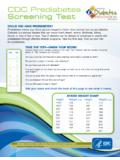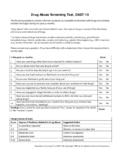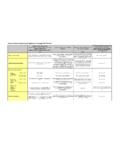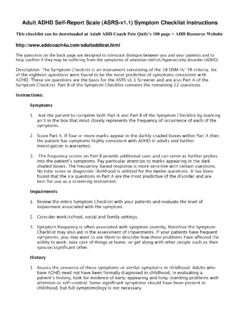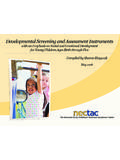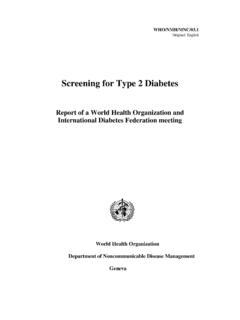Transcription of QuickScreen™ Pro Multi Drug Screening Test - …
1 PPhhaammaatteecchh,, ,, 99553300 PPaaddggeetttt SSttrreeeett,, SSuuiittee 110011 SSaann DDiieeggoo,, CCAA 9922112266 UUSSAA ((888888)) 663355--55884400 TToollll-- ffrreeee ((885588)) 663355--55884433 ffaaxx IInntteerrnneett:: 1 quickscreen Pro Multi Drug Screening Test Catalog # 9177T Test Instructions Intended Use The quickscreen Pro Multi Drug Screening Test is a rapid, self-timing, qualitative immunoassay for the detection of drugs of abuse in urine. The cutoff concentrations for this test are PCP at 25 ng/mL, Amphetamine at 1000 ng/mL, THC metabolite (THCA) at 50 ng/mL, Cocaine metabolite (Ben-zoylecgonine) at 300 ng/mL and Opiates at 2,000 ng/mL. This assay is intended for professional use. This test provides only a preliminary test result.
2 A more specific alternate testing method must be used in order to obtain a confirmed analytical result. Gas chromatography / mass spectrometry (GC/MS) is the preferred confirmatory method. Other chemical confirmation methods are avail-able. Clinical consideration and professional judgment should be applied to any drug of abuse test result, particularly when preliminary positive results are observed. Summary & Explanation of the Test Phencyclidine, also known as Angel Dust or PCP, is used primarily as a recreational drug for its hal-lucinogenic effects. Commonly eaten, inhaled, smoked or injected, it is well absorbed by all routes of administration, concentrating fastest in fatty tissues and in the brain. Unchanged PCP is excreted in the urine in moderate amounts (10% of the dose).
3 The terminal half-life for PCP varies considerably, rang-ing from 8 to 55 hours, averaging 18 hours. The effects of this drug are unpredictable and variable. Users may exhibit signs of euphoria, anxiety, relaxation, increased strength, time and space distortions, panic and hallucination. Amphetamine (AMP) and its metabolites are central nervous system stimulants whose pharmacological properties include alertness, wakefulness, increased energy, reduced hunger and an overall feeling of well being. Large doses and extended usage can result in higher tolerance levels and physiological de-pendency. Both d and l forms of Amphetamine are controlled substances. 9-Tetrahydrocannabinol (THC) is generally accepted to be the principle active component in mari-juana and hashish, although other cannabinoids are likely to contribute to their physiological activity.
4 THC is rapidly absorbed by inhalation and by the gastrointestinal tract, and is almost completely metabo-lized. Its predominant metabolite, 11-Nor- 9-THC-2-carboxylic Acid, or THCA, is found in the plasma, feces and urine along with other compounds. Very low concentrations of THC may be detected in urine during the initial several hours, but THCA persists in urine at a detectable concentration for many days after smoking. Cocaine (COC) is an alkaloid present in coca leaves (Erythyroxine coca) whose pharmacological prop-erties include alertness, wakefulness, increased energy and an overall feeling of euphoria. Cocaine has been used medicinally as a local anesthetic, however, its addictive properties have minimized its modern value as an anesthetic. Elimination of cocaine is predominantly controlled by its biotransformation.
5 It is almost completely metabolized to Benzoylecgonine. Very low concentrations of Cocaine may be de-tected in urine during the initial several hours, but Benzoylecgonine persists in urine at detectable con-centrations for 48 hrs. PPhhaammaatteecchh,, ,, 99553300 PPaaddggeetttt SSttrreeeett,, SSuuiittee 110011 SSaann DDiieeggoo,, CCAA 9922112266 UUSSAA ((888888)) 663355--55884400 TToollll-- ffrreeee ((885588)) 663355--55884433 ffaaxx IInntteerrnneett:: 2 Opiates (OPI 2000) are addictive, pain-relieving narcotic drugs derived from the opium poppy (Papaver somniferum). An opiate is any natural or synthetic drug derived from this plant that has morphine-like pharmacological actions. Natural opiates include Codeine, Morphine and Thebaine. Synthetic opiates in-clude Heroin, Hydrocodone and Levorphanol.
6 Urine-based Screening tests for drugs of abuse range from complex analytical procedures to simple im-munoassay tests . The sensitivity and rapidity of the immunoassay have made them the most accepted method of preliminary Screening for drugs of abuse in urine. This allows the laboratory to eliminate the large number of negative specimens and focus on the smaller number of initially positive samples. Principles of the Procedure The quickscreen Pro Multi -Drug Screening Test is a competitive immunoassay that is used to screen for the presence of drugs of abuse in urine. It is a chromatographic absorbent device in which drugs or drug metabolites in a sample compete with drug / protein conjugate immobilized on a porous membrane for a limited number of antibody / dye conjugate binding sites. The test device employs a unique combi-nation of monoclonal and polyclonal antibodies to selectively identify drugs of abuse in urine with a high degree of confidence.
7 The test device also contains a self-timer that indicates when test results are ready to be interpreted. In the procedure, the absorbent end of the test device is inserted into the urine sample. The urine is ab-sorbed into the device by capillary action, mixes with the antibody / dye conjugate, and flows across the pre-coated membrane. When sample drug levels are below the target cutoff (the detection sensitivity of the test), antibody / dye conjugate binds to the drug / protein conjugate immobilized in the Test Re-gion (T) of the device. This produces a colored Test Band that, regardless of its intensity, indicates a negative result. When sample drug levels are at or above the target cutoff, the free drug in the sample binds to the antibody / dye conjugate, preventing the antibody / dye conjugate from binding to the drug / protein con-jugate immobilized in the Test Region (T) of the device.
8 This prevents the development of a distinct colored band, indicating a potentially positive sample. In either case, a colored Control Band is produced in the Control Region (C) by a non-specific antibody-dye / conjugate reaction. This band serves as a built-in quality control device, demonstrating antibody recognition and reactivity as well as confirming that the test is complete. Reagents & Materials Supplied 1. 25 Self-Timed Test Devices (Cat. # 9177T) with a separate panel for each target drug. Each panel contains: a. Monoclonal anti-drug antibody / colloidal gold conjugate in a protein matrix containing so-dium azide coated in the sample path b. Drug derivative / protein conjugate immobilized as a line in the Test Region (T) c. Goat anti-mouse antibody immobilized as a line in the Control Region (C) 2.
9 Directional Insert (Cat. # 9177T-DI) 3. (Optional) Single Specimen Collection Kit (Cat. # 9501 or equivalent) or 4. (Optional) Split Specimen Collection Kit (Cat. # 9502 or equivalent) PPhhaammaatteecchh,, ,, 99553300 PPaaddggeetttt SSttrreeeett,, SSuuiittee 110011 SSaann DDiieeggoo,, CCAA 9922112266 UUSSAA ((888888)) 663355--55884400 TToollll-- ffrreeee ((885588)) 663355--55884433 ffaaxx IInntteerrnneett:: 3 Warnings & Precautions 1. FOR IN VITRO DIAGNOSTIC USE ONLY. 2. For professional use only. 3. Urine samples have the potential to be infectious. Follow Universal Precautions for proper handling and disposal methods. 4. Do not use this kit beyond its expiration date. 5. This method has been established using urine only. Other fluids have not been evaluated.
10 6. Do not reuse the Test Device. Storage & Handling Requirements Store at room temperature (15 28 C). Do not freeze. Refer to expiration date for stability. Sample Collection & Preparation A fresh urine sample should be collected in one of the above-mentioned specimen collection kit or equivalent. Alternately, a clean, dry plastic or glass container, unused and without preservatives, may be used for specimen collection. Testing requires at least 3/4-inch (20 25 mL) of urine in the sample con-tainer. If required by your procedure, aliquot a portion of urine into the split sample container for later confirmation of results. If not required, dispose of all but 3/4-inch of urine and save the remainder for the quickscreen test. Samples may be tested immediately or stored for up to 48 hours at 2 8 C.
